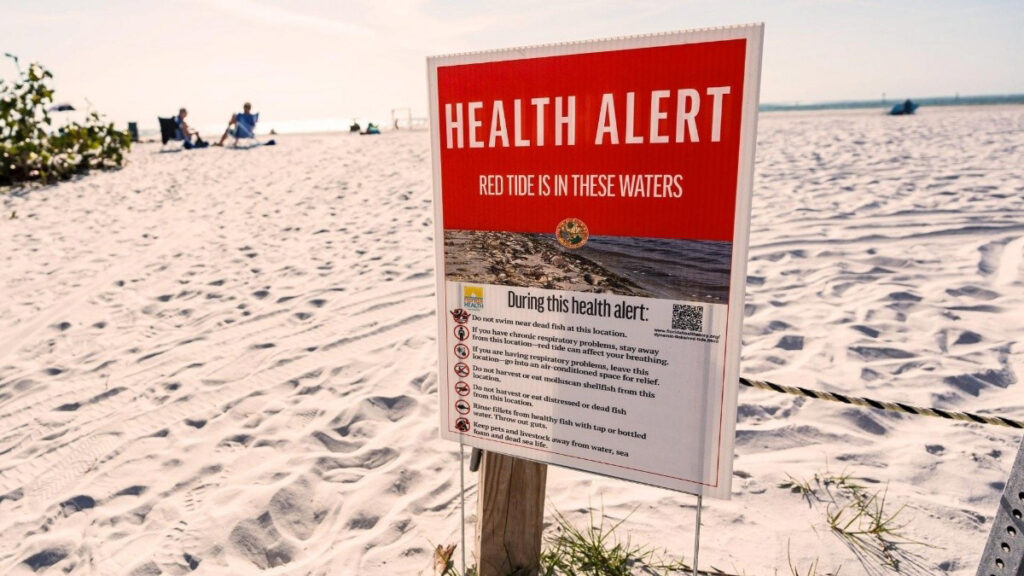Introduction
The coastal town of Gadani, located in the Lasbela district of Balochistan, Pakistan, is known for its ship-breaking yard and fishing activities. Recently, the waters near Gadani Jetty turned an unusual shade of pink, leaving locals, environmentalists, and authorities concerned. While the sight was visually striking, it quickly raised alarms about potential environmental hazards. This mysterious “pink tide” is being investigated for possible causes, including pollution, harmful algal blooms, and industrial waste discharge. The event has brought attention to the urgent need for better monitoring and protection of Pakistan’s coastal ecosystems.
The Pink Tide Phenomenon
The pink coloration of seawater is not a common occurrence, and when it does happen, it can be linked to various natural and human-induced factors. In some cases, pink tides are caused by specific microorganisms such as algae that produce reddish-pink pigments. However, in industrial and fishing zones like Gadani, the discoloration might also be due to the dumping of chemical waste, dyes, or other pollutants. Initial reports suggest that the change in water color was sudden, indicating a possible contamination event rather than a gradual natural bloom.
Potential Causes
- Harmful Algal Bloom (HAB): Certain algae species can multiply rapidly under favorable conditions, producing pigments that turn the water red, brown, or pink. These blooms can deplete oxygen levels and release toxins harmful to marine life.
- Industrial Waste Discharge: Gadani’s ship-breaking yard and nearby industries handle paints, chemicals, and metals. If these materials are improperly disposed of, they could alter water color and quality.
- Sewage and Runoff: Unregulated dumping of untreated sewage or runoff containing detergents and dyes may lead to discoloration and ecological imbalance.
Environmental Impact
The sudden change in water color is more than an aesthetic issue—it poses serious risks to marine biodiversity. A pink tide could indicate low oxygen levels, which can suffocate fish and other marine creatures. Toxic compounds, if present, may damage coral reefs, kill plankton, and disrupt the food chain. Local fishermen have already expressed concern about a noticeable decline in fish activity since the phenomenon began. If contamination is confirmed, it could also impact seafood safety, making fish and shellfish unsafe for consumption.

Health Concerns
Communities relying on seafood as a primary food source are particularly vulnerable. If the pink tide is caused by toxins from algal blooms or chemical waste, consuming contaminated seafood could lead to food poisoning, respiratory issues, and other health problems. Additionally, direct contact with contaminated water can cause skin irritation and infections among people working in the fishing industry.
Government and Environmental Response
Following reports of the pink tide, local environmental agencies and marine experts began collecting water samples for laboratory analysis. Authorities have pledged to determine whether the cause is biological or industrial. Environmental groups are urging the government to enforce stricter pollution controls and regulate waste disposal from shipyards and factories. There are also calls for establishing a dedicated marine monitoring system to detect early signs of ecological disturbances.
Global Context
Similar incidents have occurred in other parts of the world, including Australia, the United States, and China, where sudden changes in water color were traced back to harmful algal blooms, mining runoff, or industrial spills. These events often serve as reminders of the delicate balance of marine ecosystems and the consequences of human negligence. For Pakistan, the Gadani pink tide could be a wake-up call to strengthen coastal management policies.

Long-Term Solutions
To prevent similar environmental threats in the future, experts recommend:
- Implementing real-time water quality monitoring systems along the coast.
- Enforcing strict regulations on industrial waste disposal and ship-breaking activities.
- Educating local communities about reporting unusual changes in the marine environment.
- Developing marine conservation programs to restore damaged ecosystems.
Conclusion
The pink tide at Gadani Jetty is a striking yet alarming reminder of the vulnerability of our coastal waters. Whether caused by a natural algal bloom or industrial contamination, the event underscores the urgent need for proactive environmental protection measures. The health of marine life, the livelihoods of local fishermen, and the well-being of coastal communities depend on swift action and long-term commitment to safeguarding Pakistan’s oceans.



